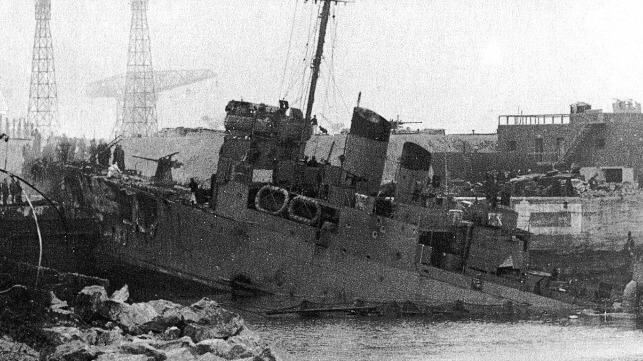Operation Chariot: 80th Anniversary of "The Greatest Raid of All"

On Monday, Royal Navy sailors and Royal Marines paid their respects to the men of the Operation Chariot raid, 80 years after a daring team of commandos sailed from the port of Falmouth.
On March 26 1942, HMS Campbeltown (ex name USS Buchanan, a WWI-era destroyer) departed Falmouth on a mission to damage the St Nazaire drydock, hoping to render the facility unusable by the German Navy. She was accompanied by 16 commando motor launches and two destroyers.
Campbeltown was lightened, upgunned with 20mm emplacements on deck and packed with 4.5 tonnes of explosives in her bow. In the early hours of March 26, on a high tide, she navigated over undefended shoals at the entrance to the Loire, and she successfully fooled German defenders for a few minutes by transmitting a German identification code. The ruse only lasted a short while, and she fought her way into the harbor under heavy fire. She rammed the dock gate at 19 knots, driving her bow up onto the structure about 30 feet. After a timed delay of several hours the charge in the ship's bow blew up, destroying the gates and knocking the giant dry dock out of action for the rest of the war.
Most of the accompanying motor launches were destroyed by German fire as Campbeltown made her final run. The survivors landed and blew up dockside installations, destroying much of the infrastructure around the port.
The cost of the raid was high. Of the 611 commandos and sailors who took part in Operation Chariot, 169 were killed and 200, mostly wounded, were taken prisoner. Only four motor launches out of 16 made it home, and just 242 men returned to Falmouth after the raid. Some of the dead lie in cemeteries in France, some were brought home to England, others have no known grave. Five Victoria Crosses were awarded, two of them posthumously.
Eight decades later, what became known as "the greatest raid of all" was remembered in a ceremony at the St. Nazaire memorial on Prince of Wales Pier in Falmouth. Military personnel, council officials and members of the public paid their respect to the courage and valor shown by the commandos on what was effectively a suicide mission.

that matters most
Get the latest maritime news delivered to your inbox daily.
Among the serving sailors present was Chief Petty Officer Lee Burkin of the P2000 patrol boat HMS Exploit. His grandfather, Able Seaman Gerald Burkin, served in the submarine HMS Sturgeon, which left Portsmouth ahead of the main convoy of ships for the raid. Sturgeon's mission was to act as a navigational beacon, providing the exact position for entry to the Loire River where the raiding force would begin the run up the estuary.
Campbeltown’s actions will be remembered in the return of her name, bestowed on one of the five vessels in the Type 31 class of next-generation Royal Navy frigates.
